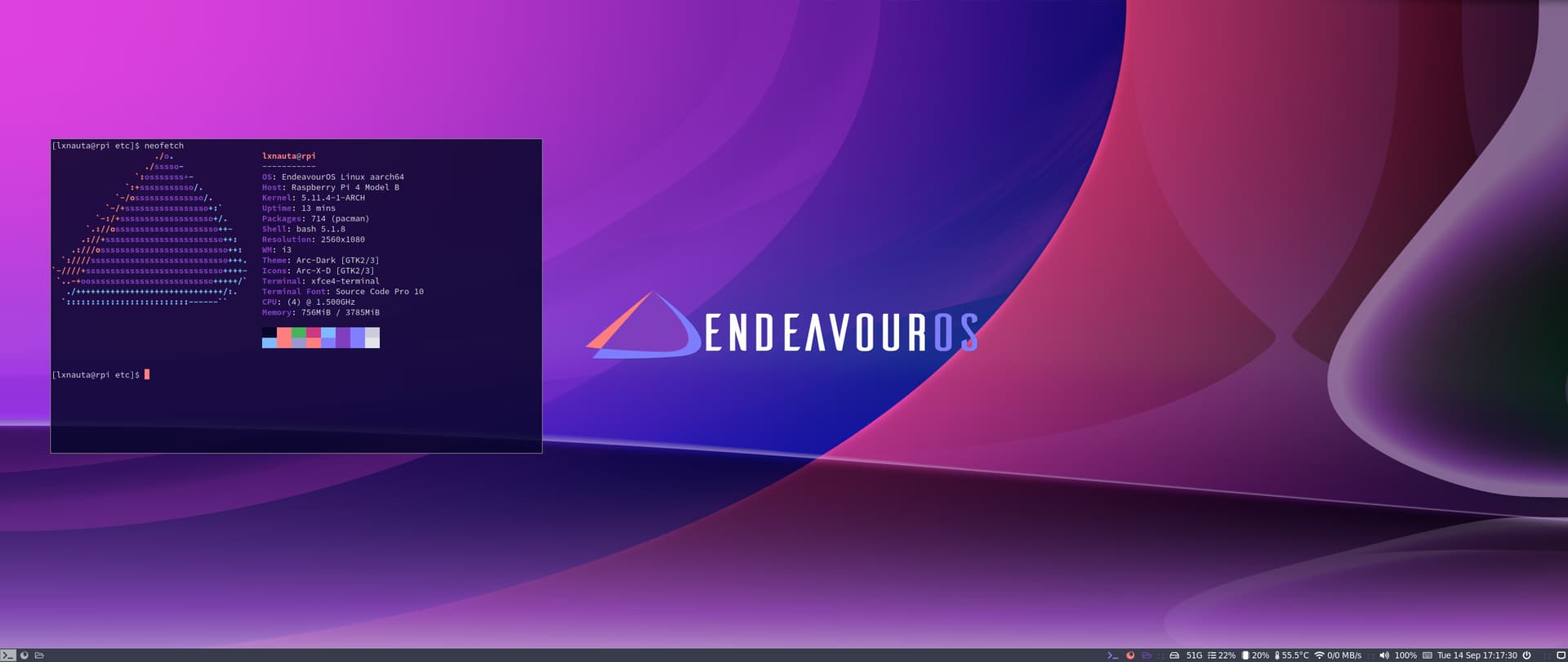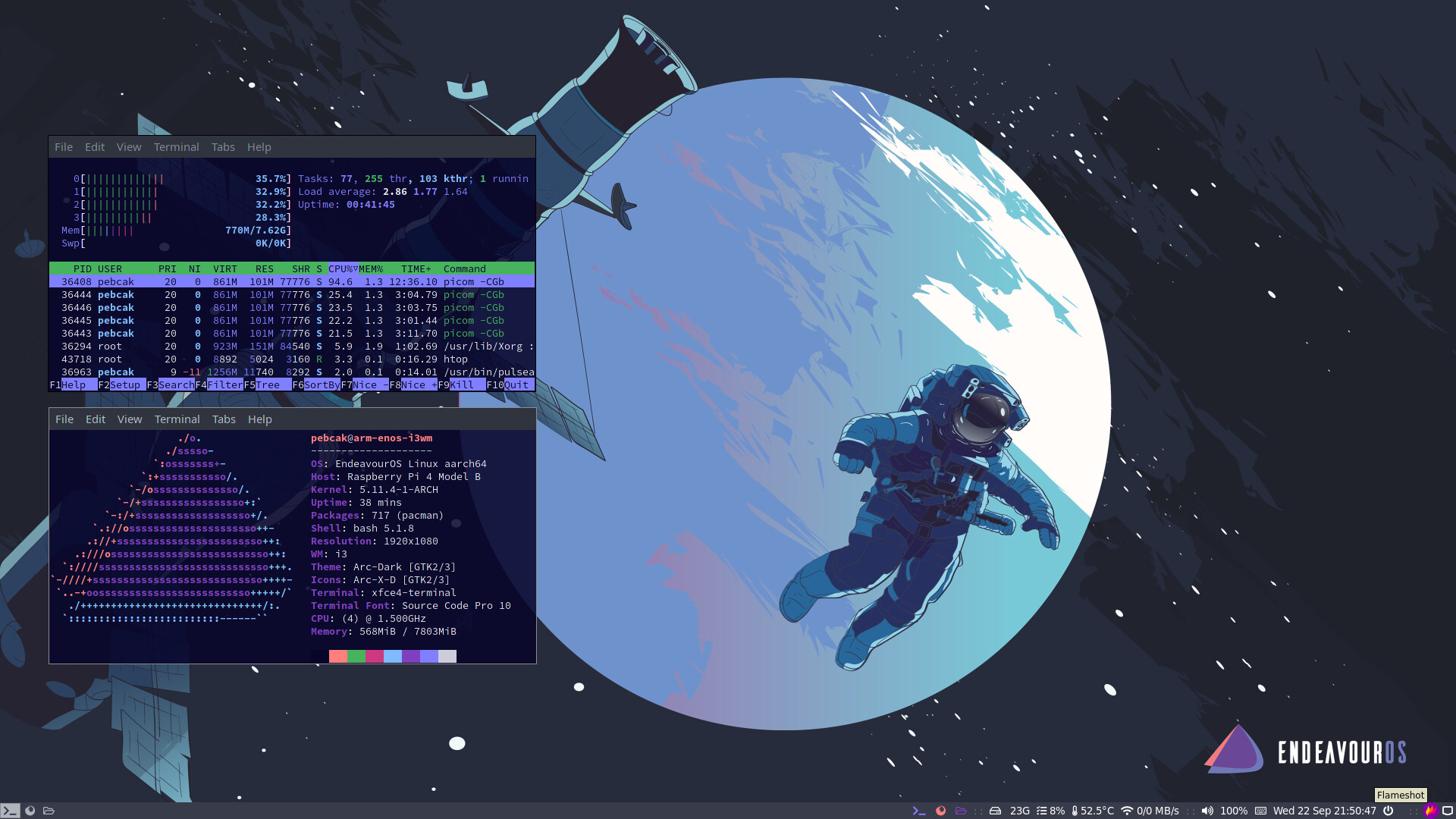Now that you mention it, I do remember having read something about Kingston from you before.
Alright, point taken!

I really found this hard to believe after the years of good service and reviews that they earned for memory (in particular). It really seemed to be the top choice.
Unfortunately, somewhere along the line it changed - and the warning given now makes sense, even if it MIGHT not apply to one particular product - I wouldn’t take the chance either! Short, unhappy, non-performant lives are NOT what I select PC components for…
Thanks for sharing that, it seems like a cool case ![]() And it’s great to be aware of possibilities. For now I’m starting to play with humbler ideas, using old external HDDs and a portable USB2 external drive that I have. It should be good enough for learning how to set and configure stuff.
And it’s great to be aware of possibilities. For now I’m starting to play with humbler ideas, using old external HDDs and a portable USB2 external drive that I have. It should be good enough for learning how to set and configure stuff.
Here’s a screenshot of my first install ![]()

@Shjim, how’s the ice tower in terms of noise?
@Pudge, thanks for you very thorough guides for ARM; they have served me well for the pinebook pro often times and now for the Pi as well.
@pebcak, thanks for stirring things in the endeavour-os arm forum! I learn a lot here.
small very  i no notice
i no notice
EDit… kit come x2 fan… blk + clear+light
( 2 power set/speed, you change pin ) info come in box
I approve this statement. After a month of debugging a hobby project that uses SD card for storage I found out that Kingston does not fully follow SD specification ![]() (contrary to some noname eBay retailer
(contrary to some noname eBay retailer ![]() ). I just developed a little grudge against them that’s all.
). I just developed a little grudge against them that’s all. ![]()
They are cheap, so that has to be visible somewhere. ![]()
![]()
You’re welcome!
I was quite impressed by that case so I thought you guys might as well like to see it.
I am also playing with what I currently have available at home. A couple of SD cards and SSDs. For now this is more than enough to get me started on this very new field to me, namely Arm Linux.
Glad to hear that! Me too I am having a blast learning so many new things. Will keep stirring ![]()
@Pudge, is there a way to run the 64 bit OS in an Raspberry pi 4b model 4GB version – from an SSD?
@lxnauta
I have started a new topic for this.
See this topic for info on this
My first ever screeshot from my first ever i3WM:

The CPU usage for picom, as you can see in the picture, makes me wonder if everything is as it should be with this install. It oscillates between 40-90 %.
Congratulations.
I will defer the picom question to either @Shjim or @joekamprad as I have little experience with picom and how it should run.
Pudge
Thanks for the reply and thanks once again for all the great job you have done and still are doing on EndeavourOS ARM!
Honestly, this is the first time I use picom so I don’t know what to expect. The CPU usage, as it is now, seems excessive to me. I’m hopeful that @Shjim or @joekamprad would shed some light on this.
That’s a lot. Can you post your config? (~/.config/picom/picom.conf)
As I see you use -C -G options with picom which are deprecated. You could just set shadow = false; in that config and start picom -b.
Or without -b - there is a warnning Causes issues with certain (badly-written) drivers. ![]()
That happened to my i3 install on the Rpi as well, Shjim then passed me the contents of a picom.conf file that solved it (in home/.config). Here goes.
picom
Shadow
shadow = true;
no-dnd-shadow = true;
#no-dock-shadow = true;
no-shadow-dock = true;
clear-shadow = true;
detect-rounded-corners = true;
shadow-radius = 1;
shadow-offset-x = 1;
shadow-offset-y = 1;
shadow-opacity = .0;
shadow-ignore-shaped = false;
shadow-exclude = [
“name = ‘Notification’”,
workaround for conky until it provides window properties:
"override_redirect = 1 && !WM_CLASS@:s",
"class_g ?= 'Dmenu'",
“class_g ?= ‘Dunst’”,
disable shadows for hidden windows:
"_NET_WM_STATE@:32a *= '_NET_WM_STATE_HIDDEN'",
"_GTK_FRAME_EXTENTS@:c",
disables shadows on sticky windows:
“_NET_WM_STATE@:32a *= ‘_NET_WM_STATE_STICKY’”,
disables shadows on i3 frames
"class_g ?= 'i3-frame'"
];
shadow-exclude-reg = “x10+0+0”;
xinerama-shadow-crop = true;
#menu-opacity = 0.95;
#inactive-opacity = 0.93;
#active-opacity = 1;
#alpha-step = 0.01;
#inactive-dim = 0.0;
#blur-background = false;
#blur-kern = “3x3box”;
fading = false;
fade-delta = 1;
fade-in-step = 0.03;
fade-out-step = 0.03;
fade-exclude = [ ];
backend = “xrender”;
mark-wmwin-focused = true;
mark-ovredir-focused = true;
detect-client-opacity = true;
unredir-if-possible = true;
refresh-rate = 0;
vsync = false;
dbe = false;
#paint-on-overlay = false;
focus-exclude = [ “class_g = ‘Cairo-clock’” ];
detect-transient = true;
detect-client-leader = true;
invert-color-include = [ ];
glx-copy-from-front = false;
#glx-swap-method = “undefined”;
use-damage = true;
#opacity-rule = [
#“99:name *?= ‘Call’”,
#“99:class_g = ‘Chromium’”,
#“99:name *?= ‘Conky’”,
#“99:class_g = ‘Darktable’”,
#“50:class_g = ‘Dmenu’”,
#“99:name *?= ‘Event’”,
#“99:class_g = ‘Firefox’”,
#“99:class_g = ‘GIMP’”,
#“99:name *?= ‘Image’”,
#“99:class_g = ‘Lazpaint’”,
#“99:class_g = ‘Midori’”,
#“99:name *?= ‘Minitube’”,
#“99:class_g = ‘Mousepad’”,
#“99:name *?= ‘MuseScore’”,
#“90:name *?= ‘Page Info’”,
#“99:name *?= ‘Pale Moon’”,
#“90:name *?= ‘Panel’”,
#“99:class_g = ‘Pinta’”,
#“90:name *?= ‘Restart’”,
#“99:name *?= ‘sudo’”,
#“99:name *?= ‘Screenshot’”,
#“99:class_g = ‘Viewnior’”,
#“99:class_g = ‘VirtualBox’”,
#“99:name *?= ‘VLC’”,
#“99:name *?= ‘Write’”,
#“93:class_g = ‘URxvt’ && !_NET_WM_STATE@:32a”,
#“0:_NET_WM_STATE@:32a *= ‘_NET_WM_STATE_HIDDEN’”,
#“96:_NET_WM_STATE@:32a *= ‘_NET_WM_STATE_STICKY’”
#];
wintypes :
{
tooltip :
{
fade = true;
shadow = false;
opacity = 0.85;
focus = true;
};
fullscreen :
{
fade = true;
shadow = false;
opacity = 1;
focus = true;
};
};
transparency for termite
opacity-rule = [“95:class_g = ‘Termite’”];
Thanks for the reply @vlkon!
That’s very odd! I don’t seem to have any config at all for picom:
ls .config/
autostart geany libfm lxterminal pulse s-tui xarchiver
bleachbit gtk-2.0 lxpanel menus qpdfview user-dirs.dirs
chromium gtk-3.0 lxsession pcmanfm QtProject.conf user-dirs.locale
dconf htop lxtask.conf procps 'Raspberry Pi' vlc
Thank you so much for the reply and help!
That’s great!
I’m just wondering how come the config for picom is absent in my system. That surely mus be the root cause of the issue.
Then you probably use default from /etc.
I can’t wrap my head around this. Here is the content of /etc:
ls /etc
adjtime gshadow- motd sensors3.conf
alsa gssapi_mech.conf mpv sensors.d
anacrontab gtk-2.0 mtab services
apparmor gtk-3.0 mtools.conf shadow
apparmor.d gufw named.conf shadow-
arch-audit healthd.conf nanorc shells
arch-release host.conf ndctl skel
atmsigd.conf hostname netconfig slsh.rc
audit hosts netctl smartd.conf
avahi hosts.atm NetworkManager speech-dispatcher
bash.bash_logout httpd nginx ssh
bash.bashrc ifplugd nscd.conf ssl
bind.keys ImageMagick-7 nsswitch.conf sudo.conf
bindresvport.blacklist initcpio openldap sudoers
binfmt.d inputrc openmpi sudoers.bak
bluetooth iproute2 openvpn sudoers.d
ca-certificates iptables os-release sudo_logsrvd.conf
cifs-utils issue ostree sysctl.conf
conf.d iwd ostree-mkinitcpio.conf sysctl.d
cpufreq-bench.conf jack pacman-chaotic-aur.conf systemd
cpupower_gui.conf kernel pacman.conf timeshift
cpupower_gui.d keyutils pacman.conf.pacnew timezone
cron.d krb5.conf pacman.d tlp.conf
cron.daily ld.so.cache pacman-gnome-unstable.conf tlp.d
cron.deny ld.so.conf pacman-testing.conf tmpfiles.d
cron.hourly ld.so.conf.d pacman-testing.conf.bckp tor
cron.monthly libao.conf pamac.conf trusted-key.key
cron.weekly libaudit.conf pam.d ts.conf
crypttab libblockdev papersize udev
dbus-1 libinput passwd udisks2
dconf libnl passwd- ufw
default libpaper.d pinentry ufw.old
depmod.d libva.conf pkcs11 uniconf.conf
dkms lirc polkit-1 updatedb.conf
dleyna-server-service.conf locale.conf ppp UPower
dnscrypt-proxy locale.gen profile usb_modeswitch.conf
dnsmasq.conf localtime profile.d usb_modeswitch.d
dracut.conf.d login.defs protocols usb_modeswitch.setup
e2scrub.conf logrotate.conf pulse vbox
environment logrotate.d rc_keymaps vconsole.conf
eos-script-lib-yad.conf lsb-release rc_maps.cfg vde
eos-sendlog.conf lvm rdnssd vde2
ethertypes machine-id reflector-simple.conf vdpau_wrapper.cfg
firejail mailcap reflector-simple-tool.conf vpnc
flatpak mail.rc request-key.conf wgetrc
fonts makepkg.conf request-key.d whois.conf
fstab man_db.conf resolv.conf wpa_supplicant
fuse.conf mdadm.conf resolvconf.conf X11
gai.conf mime.types rpc xattr.conf
gdm mke2fs.conf rsyncd.conf xdg
geoclue mkinitcpio.conf rygel.conf xinetd.d
group mkinitcpio.d sane.d xl2tpd
group- modprobe.d securetty xml
gshadow modules-load.d security
I don’t see anything picom in there. The mystery thickens ![]()
@pebcak These are probably the most important in this case
Also Raspberry pi may require more GPU memory if you have some heavy graphical effects (I do not think picom is that taxing though).
Try find - it may be in some subdir
find /etc -iname "*picom*" 2> /dev/null
edit: man page
picom could read from a configuration file if libconfig support is compiled in. If --config is not used, picom will seek for a configuration file in $XDG_CONFIG_HOME/picom.conf (~/.config/picom.conf, usually), then $XDG_CONFIG_HOME/picom/picom.conf, then
$XDG_CONFIG_DIRS/picom.conf (often /etc/xdg/picom.conf), then $XDG_CONFIG_DIRS/picom/picom.conf.
find /etc -iname "*picom*" 2> /dev/null
I don’t get any output 
